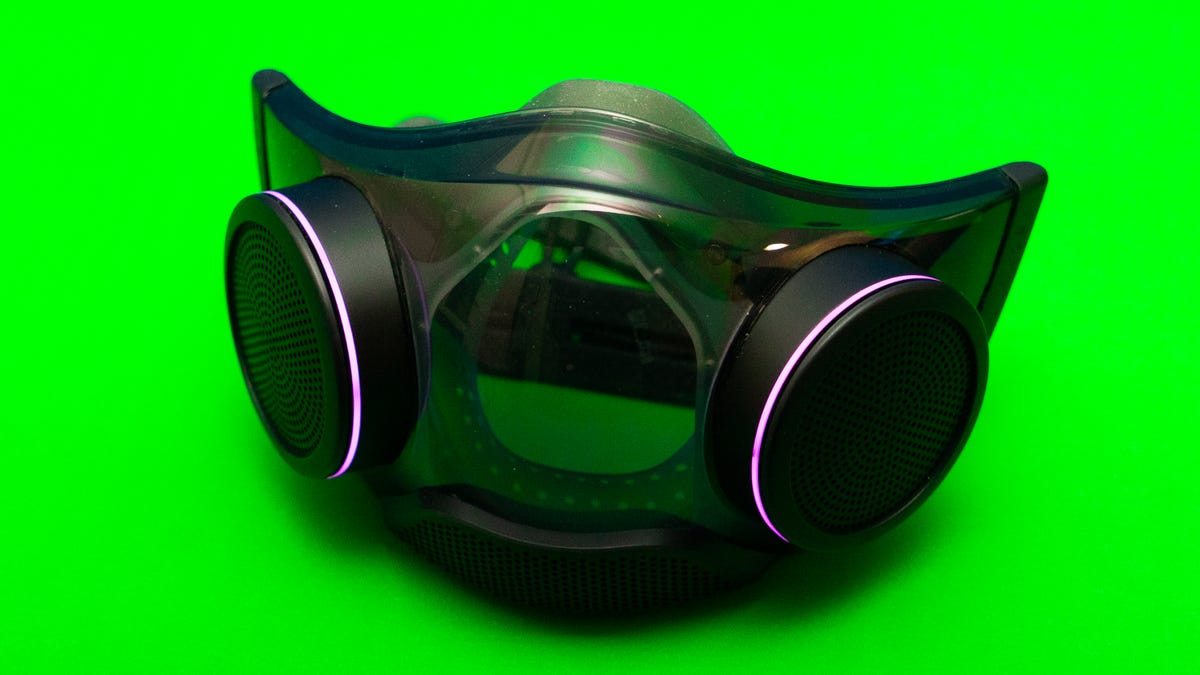FTC Fines Razer for Misrepresenting COVID Masks as N95s
The federal agency proposes a $1.1 million settlement to refund defrauded customers.

The Zephyr mask debuted as a concept in 2021.
A gaming lifestyle company that manufactured face masks for the COVID-19 pandemic has been ordered to pay up for allegedly playing its customers. According to a complaint filed by the US Federal Trade Commission on April 26, Razer misrepresented its line of Zephyr face masks as being N95-grade without ever being certified by the Food and Drug Administration or the National Institute for Occupational Safety and Health. Under a proposed settlement, the company would pay $1.1 million to provide refunds for customers in the US as well as a $100,000 civil penalty.
"We disagree with the FTC's allegations and did not admit to any wrongdoing as part of the settlement," a representative for Razer said in an emailed statement. "It was never our intention to mislead anyone, and we chose to settle this matter to avoid the distraction and disruption of litigation and continue our focus on creating great products for gamers. Razer cares deeply about our community and is always looking to deliver technology in new and relevant ways.
"The Razer Zephyr was conceived to offer a different and innovative face covering option for the community. The FTC's claims against Razer concerned limited portions of some of the statements relating to the Zephyr. More than two years ago, Razer proactively notified customers that the Zephyr was not a N95 mask, stopped sales, and refunded customers."
Razer, best known for gaming accessories like mice and keyboards, started selling Zephyr masks and filters online and in stores in October 2021. In a reflection on that year's tech, CNET's Lori Grunin registered her disappointment in Razer's "wearable air purifier."
"When I think of products with promise that let me down in 2021, the Razer Zephyr is at the top of my list," Grunin wrote in January 2022. "It arrived as a concept at CES 2021 that smartly rethought the face mask in a pandemic-stricken era. But by the time it shipped at the end of the year, economic realities and design flaws made it a mask I can't even bring myself to wear."
Later that month, PC Mag reported that the company updated its website and marketing materials to point out that the Razer Zephyr and Zephyr Pro aren't certified N95s, but didn't publicly announce the change.
"These businesses falsely claimed, in the midst of a global pandemic, that their face mask was the equivalent of an N95 certified respirator," Samuel Levine, director of the FTC's Bureau of Consumer Protection, said in last week's news release. "The FTC will continue to hold accountable businesses that use false and unsubstantiated claims to target consumers who are making decisions about their health and safety."
If you purchased a Zephyr face mask, you may be entitled to make a claim to receive money from the settlement -- one day. Here's what's happening now, and what needs to change in order to put you on the road to a refund.
Read more: Razer Zephyr Pro Breathes Some Life Into Its Mask at CES 2022
Who's eligible for money from the proposed settlement?
You may be eligible for money if you're a US customer who purchased a Zephyr face mask. According to FTC's complaint, the company began offering Zephyr masks and filters in October 2021. The Razer Zephyr ($100) and Razer Zephyr Filter Pack ($30) were sold online and in three stores located in Las Vegas, San Francisco and Seattle and the Razer Zephyr Starter Pack ($150) was sold online in "limited drops."
How much money could I receive?
If the settlement is approved and finalized, Razer will pay $1.1 million into a settlement fund that FTC would use to give full refunds to customers who submit a claim.
How do I claim money?
Typically, a customer could fill out a claim form online on a settlement's administrative site or send one via snail mail. There are no available instructions to submit a claim as of this writing, but that will likely become available in the future. We'll update the post as more information becomes available.